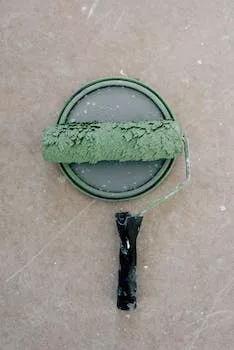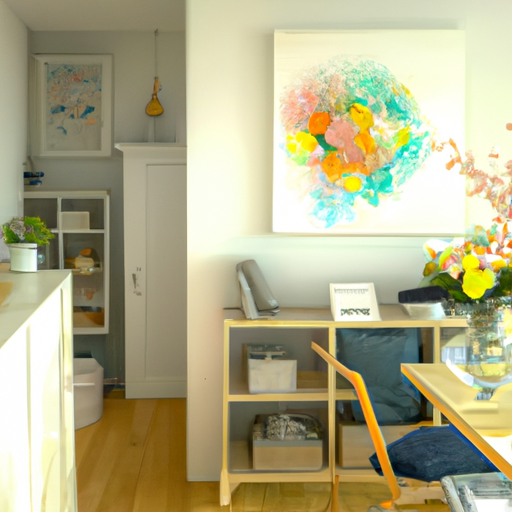Incorporating Minimalism for a Low-Maintenance Lifestyle
The role of design in creating a low-maintenance home cannot be overstated. As homeowners increasingly seek to simplify their lives and reduce the time and effort spent on household chores, the concept of minimalism has gained traction as a guiding principle in home design. By incorporating minimalist design elements and strategies, homeowners can create spaces that are not only visually appealing but also easy to maintain.
One of the key tenets of minimalism is the idea that less is more. This philosophy can be applied to various aspects of home design, from the choice of materials and finishes to the selection of furniture and decorative items. By opting for durable, high-quality materials that are resistant to wear and tear, homeowners can minimize the need for frequent repairs and replacements. For instance, choosing stain-resistant fabrics for upholstery, easy-to-clean surfaces for countertops, and hard-wearing flooring materials such as tile or hardwood can significantly reduce maintenance requirements.
In addition to selecting materials that are inherently low-maintenance, homeowners can also adopt a minimalist approach to the overall layout and organization of their living spaces. This involves eliminating unnecessary elements and streamlining the design to create a sense of openness and simplicity. By reducing the number of items in a room, homeowners can not only create a more visually appealing space but also make it easier to clean and maintain. For example, opting for built-in storage solutions such as cabinets and shelves can help to keep clutter at bay, while choosing furniture with clean lines and simple forms can make dusting and vacuuming a breeze.
Another important aspect of minimalism in home design is the emphasis on functionality and efficiency. This means that every element in a room should serve a specific purpose and contribute to the overall flow and usability of the space. By carefully considering the placement of furniture, lighting, and other design elements, homeowners can create spaces that are not only aesthetically pleasing but also practical and easy to navigate. This, in turn, can help to reduce the amount of time and effort required for daily tasks such as cooking, cleaning, and organizing.
Incorporating minimalism into a home’s design also extends to the choice of color palette and decorative elements. By opting for a neutral color scheme, homeowners can create a sense of calm and cohesion that makes it easier to maintain a clean and orderly environment. Moreover, a minimalist approach to decoration involves selecting a few carefully chosen pieces that add visual interest without creating clutter or requiring extensive upkeep. For instance, a single large piece of artwork or a statement light fixture can serve as a focal point in a room, eliminating the need for multiple smaller decorative items that can collect dust and create visual chaos.
Ultimately, the role of design in creating a low-maintenance home is to strike a balance between form and function. By embracing the principles of minimalism, homeowners can create spaces that are not only visually appealing but also easy to care for and maintain. This, in turn, can lead to a more relaxed and enjoyable lifestyle, as well as significant savings in terms of time, effort, and resources. As the popularity of minimalism continues to grow, it is clear that the role of design in facilitating a low-maintenance lifestyle is more important than ever.
Sustainable Materials and Design Techniques for Easy Home Upkeep

The role of design in creating a low-maintenance home is an essential aspect to consider when planning a new build or renovation. With the increasing demands of modern life, homeowners are seeking ways to reduce the time and effort required to maintain their living spaces. By incorporating sustainable materials and design techniques, it is possible to create a home that is not only environmentally friendly but also easy to care for.
One of the key factors in designing a low-maintenance home is the selection of materials. Sustainable materials, such as reclaimed wood, recycled metal, and natural stone, are not only eco-friendly but also durable and long-lasting. These materials require minimal upkeep and can withstand the wear and tear of daily life, making them an ideal choice for busy households. Additionally, the use of non-toxic finishes and paints can help to maintain a healthy indoor environment and reduce the need for frequent cleaning.
Another important aspect of low-maintenance design is the incorporation of energy-efficient features. By utilizing passive solar design principles, such as proper window placement and shading devices, homeowners can reduce their reliance on artificial heating and cooling systems. This not only lowers energy consumption but also minimizes the need for regular maintenance of HVAC systems. Similarly, the installation of energy-efficient appliances and lighting can help to reduce energy bills and the frequency of replacing bulbs and fixtures.
Water conservation is another crucial element in creating a low-maintenance home. By incorporating water-saving fixtures, such as low-flow faucets and showerheads, as well as dual-flush toilets, homeowners can significantly reduce their water usage. Additionally, the use of drought-tolerant landscaping and native plants can minimize the need for frequent watering and maintenance of outdoor spaces. Rainwater harvesting systems can also be installed to collect and store rainwater for use in irrigation, further reducing the reliance on municipal water supplies and the associated maintenance requirements.
The layout and organization of a home can also contribute to its ease of maintenance. Open floor plans and minimalist design principles can help to create a sense of spaciousness and reduce the number of surfaces that require cleaning. Incorporating ample storage solutions, such as built-in cabinetry and closets, can help to keep clutter at bay and make it easier to maintain a tidy home. Additionally, the use of durable flooring materials, such as polished concrete or tile, can reduce the need for frequent vacuuming and carpet cleaning.
Finally, the integration of smart home technology can further streamline the maintenance process. By automating tasks such as lighting control, temperature regulation, and security monitoring, homeowners can reduce the time and effort required to manage their living spaces. Additionally, smart appliances can be programmed to perform routine maintenance tasks, such as self-cleaning ovens and robotic vacuum cleaners, further simplifying the upkeep process.
In conclusion, the role of design in creating a low-maintenance home is multifaceted and involves the careful selection of sustainable materials, the incorporation of energy-efficient features, and the thoughtful organization of living spaces. By prioritizing these elements during the design process, homeowners can create a home that is not only environmentally friendly but also easy to care for. This not only benefits the homeowner in terms of reduced time and effort spent on maintenance tasks but also contributes to a more sustainable and eco-conscious lifestyle.
Smart Home Technologies that Simplify Household Maintenance
The role of design in creating a low-maintenance home is becoming increasingly important as homeowners seek to simplify their lives and reduce the time and effort spent on household chores. Smart home technologies are at the forefront of this movement, offering innovative solutions that not only make our homes more efficient and comfortable but also significantly reduce the need for regular maintenance. By incorporating these technologies into the design of our homes, we can create living spaces that are not only aesthetically pleasing but also highly functional and easy to maintain.
One of the most significant advancements in smart home technology is the development of intelligent heating, ventilation, and air conditioning (HVAC) systems. These systems are designed to automatically adjust the temperature and humidity levels within a home, ensuring optimal comfort while minimizing energy consumption. By incorporating sensors and advanced algorithms, these systems can learn the preferences of the occupants and adapt accordingly, reducing the need for manual adjustments and ongoing maintenance. Furthermore, smart HVAC systems can be remotely monitored and controlled, allowing homeowners to easily identify and address any issues that may arise, such as filter replacements or system malfunctions.
Another area where smart home technology is simplifying household maintenance is in the realm of home security. Traditional security systems often require regular maintenance, such as battery replacements and sensor recalibration. However, modern smart security systems are designed to be more self-sufficient, with features such as solar-powered cameras and self-monitoring capabilities. These systems can also be easily integrated with other smart home devices, such as smart locks and lighting, providing a comprehensive security solution that requires minimal upkeep.
In addition to HVAC and security systems, smart home technologies are also transforming the way we maintain our gardens and outdoor spaces. Robotic lawn mowers and irrigation systems can be programmed to automatically maintain lawns and gardens, reducing the need for manual labor and ensuring that outdoor spaces remain well-kept and visually appealing. These systems can also be connected to weather forecasts and soil sensors, allowing them to adapt to changing conditions and optimize water usage, further reducing the need for ongoing maintenance.
The integration of smart appliances and devices within the home is another key aspect of creating a low-maintenance living environment. Smart appliances, such as washing machines, dishwashers, and refrigerators, can be programmed to run during off-peak hours, reducing energy consumption and prolonging the life of the appliance. Additionally, many smart appliances are equipped with self-diagnostic capabilities, enabling them to identify potential issues and alert homeowners before they become significant problems. This not only simplifies maintenance but also helps to prevent costly repairs and replacements.
Finally, the use of durable and low-maintenance materials in the design and construction of a home can significantly reduce the need for ongoing upkeep. For example, choosing materials such as composite decking, metal roofing, and low-maintenance siding can help to minimize the time and effort required to maintain the exterior of a home. Similarly, selecting flooring materials that are resistant to wear and tear, such as luxury vinyl or ceramic tile, can help to ensure that interior spaces remain attractive and functional with minimal maintenance.
In conclusion, the role of design in creating a low-maintenance home is becoming increasingly important as homeowners seek to simplify their lives and reduce the time and effort spent on household chores. By incorporating smart home technologies and selecting durable, low-maintenance materials, we can create living spaces that are not only aesthetically pleasing but also highly functional and easy to maintain. As technology continues to advance, we can expect to see even more innovative solutions that will further simplify household maintenance and enhance our overall quality of life.
Q&A
Question 1: What are the key design elements to consider when creating a low-maintenance home?
Answer 1: The key design elements to consider when creating a low-maintenance home include durable materials, open floor plans, easy-to-clean surfaces, minimalistic design, and incorporating low-maintenance landscaping.
Question 2: How can the choice of materials contribute to a low-maintenance home?
Answer 2: Choosing durable, long-lasting, and easy-to-clean materials such as stainless steel, quartz, or laminate for countertops, and opting for flooring options like tile, hardwood, or luxury vinyl can significantly reduce the time and effort required for maintenance and increase the longevity of the home.
Question 3: How does incorporating low-maintenance landscaping contribute to a low-maintenance home design?
Answer 3: Low-maintenance landscaping involves using native plants, drought-tolerant species, and incorporating hardscaping elements like patios and walkways. This reduces the need for regular watering, pruning, and lawn care, ultimately saving time and resources while maintaining an attractive outdoor space.
Conclusion
In conclusion, the role of design in creating a low-maintenance home is crucial as it involves the careful selection of materials, layout, and features that minimize the need for regular upkeep and repairs. By incorporating sustainable, durable, and easy-to-clean elements, homeowners can enjoy a comfortable living space that requires less time, effort, and resources to maintain, ultimately leading to a more efficient and eco-friendly lifestyle.


